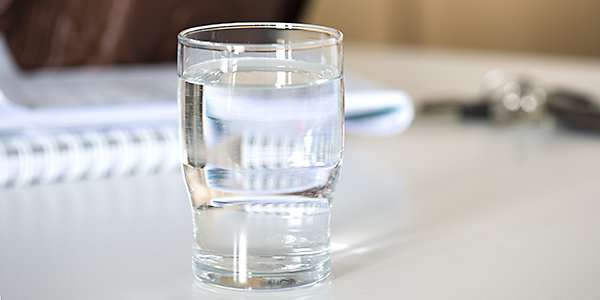Double Disinfection for Wastewater More Effective, and Greener

Double disinfection treatment for safer drinking water. (Credit: University of Eastern Finland)
Conventional wastewater treatment includes multiple processes, with disinfection as the final step. After disinfection, water should be free of pathogenic organisms, yet contamination is still a major challenge all over the world. There is more than one way to disinfect wastewater; chemicals such as ozone or chlorine are commonly used for this purpose, but physical methods such as UV light exposure are also effective. In some places, such as Orange County, California, a combined chemical-physical process is used, despite its higher cost.
Determining which disinfection methods are most effective—and cost-effective—is a pressing goal. Combining chemical and physical methods is a promising area, but exactly how and in what order to combine these techniques isn’t always clear. New research from Finland indicates that a combined disinfection treatment that puts chlorine and UV radiation to work—in that order—is a highly effective disinfection protocol. Author Alyaa Zyara, from the University of Eastern Finland, corresponded with EM about the study.
“This research was inspired by the many viruses which may pass through the treatment process and enter the distribution system, causing diarrhea which can lead to death, especially in children,” explains Zyara. “Thus, we tried to find a method that can efficiently deactivate viruses by using a low concentration of chlorine or a low dose of UV. The data we obtained in this study will be useful for managing the risk of infection caused by exposure to certain viruses in drinking water.”
The team isolated various coliphages, viruses that infect E. coli bacteria, in treated municipal wastewater for use in disinfection studies. These coliphages are useful stand-ins for human enteric viruses.
“The adenovirus shares similarities with some somatic coliphages,” details Zyara. “The indicator value of coliphages is based on the fact that their composition, structure, size, morphology, and resistance to environmental conditions, including disinfection treatments, are similar to those of the enteric pathogenic viruses. In addition, the detection and quantification of coliphages is cheaper, easier, more accurate, and faster than the detection of enteric viruses.”
Almost half of the coliphages the team isolated were highly resistant to one of the techniques—UV radiation or chlorine—but not both. Therefore, neither treatment method alone was effective against all of the coliphages. So, why are so many coliphages resistant to some form of treatment? There are many factors at play.

(a) Reactor type of 10 mL for Hg-UV in collimator; (b) Reactor type of 5.2 L for UV-LED with four LEDs at three different heights inside the water. (Credit: Zyara, et al.)
“Viruses differ by morphology, size, and resistance to environmental conditions, including disinfection treatments,” remarks Zyara. “The effect of chlorine inactivation varies depending on the virus type and the concentration of free residual chlorine.”
The ability of UV light to disinfect water is even more complex.
“The efficiency of UV disinfection is affected by water quality, including increases in turbidity; organic matter, which absorbs UV; and hardness, which may affect the lamp function by forming precipitates on the lamp surface,” states Zyara. “The efficiency is also affected by the length of irradiation time, adsorption, lamp intensity, reflection in the interface of air and water, and beam divergence. Other factors are related to the microorganisms and strain variation, repair mechanisms, and physiological state (for example, pre-culturing or growth phase).”
The research did reveal, though, that combined treatment is by far the most effective technique. Furthermore, when coliphages were exposed first to a low concentration of chlorine (0.1 or 0.5 mg Cl/L) for 10 minutes and then to low UV radiation (22 mWs/cm2), more than 99.9% of the coliphages were inactivated. However, when the UV exposure came first and the chlorine followed, disinfection was far less effective.
Chlorine can damage to the coliphages’ surface structures by breaking the chemical bonds in enzymes and proteins, explains Zyara. Focusing on the nucleic acids, the UV irradiation causes damage, and together with chlorine it might cause the formation of radicals that hurt the virus particles.
The team also tested new UV-LED technology, using 270 nm UV-LEDs with a 120 mW irradiation capacity for the first time in a disinfection study. The UV-LED treatment was highly effective, with as little as 2 minutes exposure in a 5.2-liter reactor causing a reduction of up to 99.9% of the coliphages. In the same reactor, an irradiation time of 10 minutes increased the reduction to 99.99 – 99.999%. Furthermore, UV-LEDs consume less energy than traditional UV lamps, and contain no mercury.
Keep an eye out for more UV-LED water quality applications in the future; this new technology holds plenty of promise. With lower levels of chlorine going into the water and no mercury in the lamps, these systems will also have greener profile as well as a more effective track record of double disinfection.




0 comments